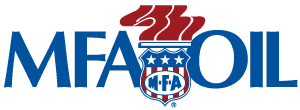
Fundamentals of Cover Crops
October 17, 2016
Written By Alan Sundermeier
Recent environmental and ecological awareness has started a resurgence in cover crop use. Although cover crops have been used for centuries, today’s modern farmer has grown up in a generation which has replaced the use of cover crops with widespread use of fertilizers and herbicides. Now as some farmers are trying to use cover crops, they lack the information and experience to be successful. University and private researchers are going back to the basics and are experimenting with beneficial plants to determine how they can be used best in modern farming practices to supplement or replace purchased inputs. Cover crops have an important role in successful sustainable farming systems.
Benefits
The main purpose of a cover crop is to benefit the soil and/or other crops but is not intended to be harvested for feed or sale. Some of the primary benefits from cover crops include:
- Soil quality improvements—Soil tilth is improved whenever a plant establishes roots and grows into compacted areas. Water infiltration is improved as well. When a field lays fallow for a period of time, the surface tends to seal and water will run off. Cover crops protect the soil surface and reduce sealing. Also, beneficial organisms in the soil, such as earthworms, thrive when fresh plant material is decomposing. Organic matter levels tend to improve with the addition of cover crops.
- Erosion control—Cover crops reduce wind and water erosion on all types of soils. By having the soil held in place by cover crops during the fall, winter and early spring, loss of soil from erosion is greatly reduced.
- Fertility improvements—Legumes can add substantial amounts of available nitrogen to the soil. Non-legumes can be used to take up excess nitrogen from previous crops and recycle the nitrogen as well as available phosphorus and potassium to the following crop. This is very important after manure application, because cover crops can reduce leaching of nutrients.
- Suppress weeds—A dense stand of winter rye or other cover crop can suppress weeds by soil shading. Allelochemicals from cover crops suppress the growth of other plants.
- Insect control—Beneficial insects, such as lady beetles or ground beetles, may be encouraged by planting cover crops.
When to Plant
How do farmers get started with cover crops? First, they must determine how their farming system can accommodate cover crops. Ideally, as soon as one type of crop is utilized (harvested, killed or incorporated), the next is planted. In this way, active plant growth occurs from March to November each year. Look for open periods in each field’s rotation where a cover crop can be planted. The rotation timeline on the next page illustrates opportunities for using cover crops in a corn, soybean and wheat rotation.

Types of Cover Crops
Selection of a cover crop depends on when it can be planted and the goal for its use. There are many cover crop species. Legume cover crops fix atmospheric nitrogen into a form plants and microorganisms can use. Non-legume species recycle existing soil nitrogen and other nutrients and can reduce leaching losses.
A combination of two or more types of cover crops may be beneficial for quick establishment and improved nutrient utilization.
Seeding
Seed cost, method of seeding and method of killing the cover crop should also be considered. Often, farmers are able to grow their own cover crop seed and save on seed costs. Larger seeds, such as hairy vetch and winter peas, can be planted through the normal hopper of a drill. Clovers may require a small-seeder attachment. Broadcasting cover crop seed can also be done with a fertilizer cart followed by light incorporation. If a legume is planted that has not been grown before, the proper inoculant should be added when seeding.
Managing Growth
There are some drawbacks to using cover crops. If the cover crop does not naturally winter-kill, then a farmer should have a method for killing the crop before it competes with the next cash crop. This can be done mechanically or by using herbicides. Cover crops can act as weeds if not controlled.
Timing is important when killing a spring growing cover crop. Cover crops should be allowed to grow as long as possible in the spring to add additional nutrients to the soil and suppress weeds, but they can also use up soil moisture and hurt the following cash crop if dry conditions exist. More management time is required to determine how and when it would be best to control the cover crop. Hard seed that did not germinate may also require control later in the season. Like any other crop, moisture is needed to establish a cover crop. This is especially critical during July and August.
Return on Investment
The economics of using cover crops can be calculated by the savings of purchased nutrients and herbicides versus the additional cost of using cover crops. There are also other factors that are not easily credited to cover crop use, such as improved soil tilth, enhancing soil biology and improving organic matter content of the soil. Overall, as the costs of fertilizer and herbicides continue to increase, the benefits of using cover crops in a sustainable farming system will become more attractive to modern farmers. More research is needed to quantify the effects of cover crops so that research-based recommendations can be given to producers.

